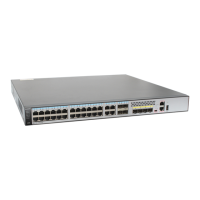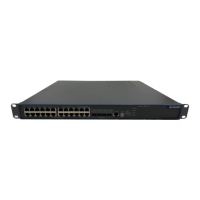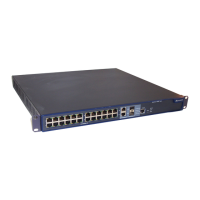2.1 Introduction to LLDP
The Link Layer Discovery Protocol (LLDP) is a Layer 2 discovery protocol defined in the IEEE
802.1ab standard.
Background
Currently, the Ethernet technology is widely used in the network. Compared with small-scale
networks, large-scale networks require that the network management system (NMS) have more
functions and higher processing capability. For example, the NMS needs to obtain the topology
of connected devices and configuration conflicts between devices.
Currently, many NMSs use the automated discovery function to trace the topology changes.
However, most of them at best analyze the Layer 3 network topology and group devices into
different IP subnets. These NMSs provide only the data concerning the basic events such as
adding or deleting of devices, but do not determine the connected interfaces between devices or
obtain information about configuration conflicts.
The Layer 2 discovery protocol precisely discovers the interfaces on each device and obtains
connection information between devices. In addition, it displays the paths between clients,
switches, routers, application servers, and network servers. The Layer 2 information helps you
quickly know the device topology, detect configuration conflicts between devices, and locate
network faults.
The LLDP protocol is a Layer 2 discovery protocol defined in the IEEE 802.1ab standard.
LLDP working mechanism
Figure 2-1 LLDP diagram
)
Organizationally
defined local device
LLDP MIB extension
(Optional)
Organizationally
defined remote device
LLDP MIB extension
(Optional)
LLDP local system MIB LLDP remote system MIB
LLDP agent
(
LLDP frames
LLDP/LSAP
Remote device information
Local device information
PTOPO MIB
(Optional)
Other MIBs
(Optional)
Entity MIB
(Optional)
Interface MIB
(Optional)
Quidway S5700 Series Ethernet Switches
Configuration Guide - Network Management 2 LLDP Configuration
Issue 01 (2011-10-26) Huawei Proprietary and Confidential
Copyright © Huawei Technologies Co., Ltd.
47

